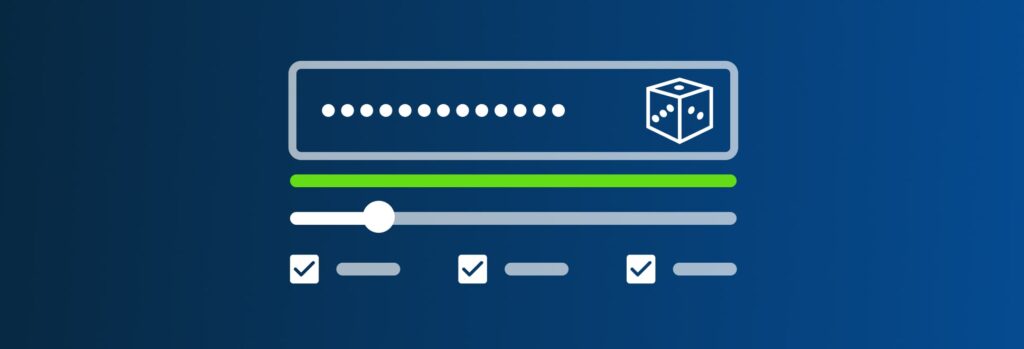Password hygiene tips to follow include using unique passwords, enabling Multi-Factor Authentication (MFA) and keeping your passwords safe in a password manager. Password hygiene encapsulates the
It might be difficult to come up with secure passwords for the multiple logins required for online banking, credit cards, email accounts, social media and more. People establish easy-to-remember passwords that include their names, the names of their spouses and children, phone numbers, hometowns and other simple information. And to top it all off, most people reuse passwords when it comes time to create fresh login credentials. However, you shouldn’t carry around sticky notes with a list of your passwords. You shouldn’t divulge this information to anyone, and you shouldn’t use previous passwords again either.
What Makes A Password Strong?
Strong passwords should be long, complex and difficult to remember. Simple and well-known passwords, such as password123 or your child’s name, are simple to remember but also simple for cybercriminals to decipher. Your first line of defense against cybercriminals hacking into your online accounts and stealing your personal data is to use strong, one-of-a-kind passwords.
Strong Passwords Best Practices
- Do not use sequential numbers
For example, 12345… - Do not include your birthday/birth year
Cybercriminals can obtain this information by finding your social media where your birthday is listed - Do not use names or words that can be found in the Dictionary
Substitute letters with numbers. Instead of using Hello!IamJodine as your password, try H3ll0!I@mJ0d1n3. - Use a password manager to securely store your passwords
Avoid writing your password on a piece of paper or typing it in a note on your phone. - Do not reuse passwords
If a cybercriminal guesses one password that you use for everything, it’s very likely that they can access the rest of your personal and professional accounts. - Do not use your name, your pet’s name, or any part of your home address.
Cybercriminals look for information like your social media profiles, on their targets that will enable them to breach your password. And they’ll use any information they can find about you, including your address, your occupation, your interests, your birthday and your family, to carefully guess your password.
Why Creating A Strong Password Is Important
Cybercriminals can gain access to several accounts at once, giving them access to business or personal accounts and personal information. Imagine a cybercriminal getting into just one-third of your business accounts. They could have access to:
- Bank Information
- Personal Information on employees
- Benefits Information, including account numbers
- Sensitive company data
- Product Information
- Trade Secrets
- Other login credentials
Understand the difference in cyber attacks to avoid any hackers from accessing your information.
Brute Force: A Brute Force is a type of cyber attack that uses trial and error methods to guess login credentials, security keys or other sensitive information. Brute force attacks are effective, especially given that two-thirds of many people reuse their passwords. Numerous firms were compelled to use work-from-home models due to the pandemic. Businesses that had never before supported a work-from-home model were faced to quickly learn and adapt to this new model, if not they’d be left in the dark. Through this, thousands of enterprises failed. Those that didn’t had to deal with fresh cybercrime difficulties. It was a substantial conflict to overcome for all.
Credential Stuffing: A credential stuffing attack is when a cybercriminal uses a set of credentials to attempt to gain access to several accounts at once. Cybercriminals compromise everything from social media accounts to confidential enterprise software and beyond by entering the stolen credentials into thousands of websites. Reusing passwords is a prerequisite for a credential stuffing attack. Due to the prevalence of people using the same password across numerous accounts, most or all of their accounts can be accessed with only one set of login information. A majority of all data breaches are linked to stolen passwords. A user’s bank account information, social networking accounts, and other accounts could possibly be taken over by an attacker who succeeds in a credential stuffing attack. It may also result in extortion, identity theft, or outright theft of money or other assets.
Password Spraying: Password Spraying is when an attacker uses common passwords to attempt to access several accounts on one domain. Hundreds of accounts can be accessed in one attempt by using a list of popular and weak passwords. Password protection is more crucial than ever because of the very real issue of password recycling and the pervasive compromise of login credentials worldwide.
Why You Should Use A Password Generator and a Password Manager
Free password generators do not store passwords for you; they just spit them out and you have to keep track of them on your own. A password manager gives you a secure place to store all of your passwords, and it gives you access to them whenever you need. Robust password managers like Keeper have an autofill function that automatically fills in your login credentials on all of your accounts and apps.
It’s not only about creating a strong password – focus on securing your passwords as well.
Tips on How To Keep Your Password Protected and Secured
- Use a password manager to store personal and professional passwords. By using Keeper’s password manager tool, you will never have to store all your credentials in an unsecured file on your computer.
- Use two-factor authentication
In the event that a cybercriminal successfully guesses your social network login and password, two-factor authentication makes them enter a secure PIN in order to log in. If you receive this email or text notification and you aren’t attempting to log in, decline access and promptly update your username and password. - Change your passwords frequently
Don’t use the same password across several social networks, websites, and applications, even though you made it strong. You should also change your passwords frequently to ensure nothing has been compromised.
Keeper saves you the trouble of having to come up with secure passwords for all of your logins and does it for you.
 Password
Password 
